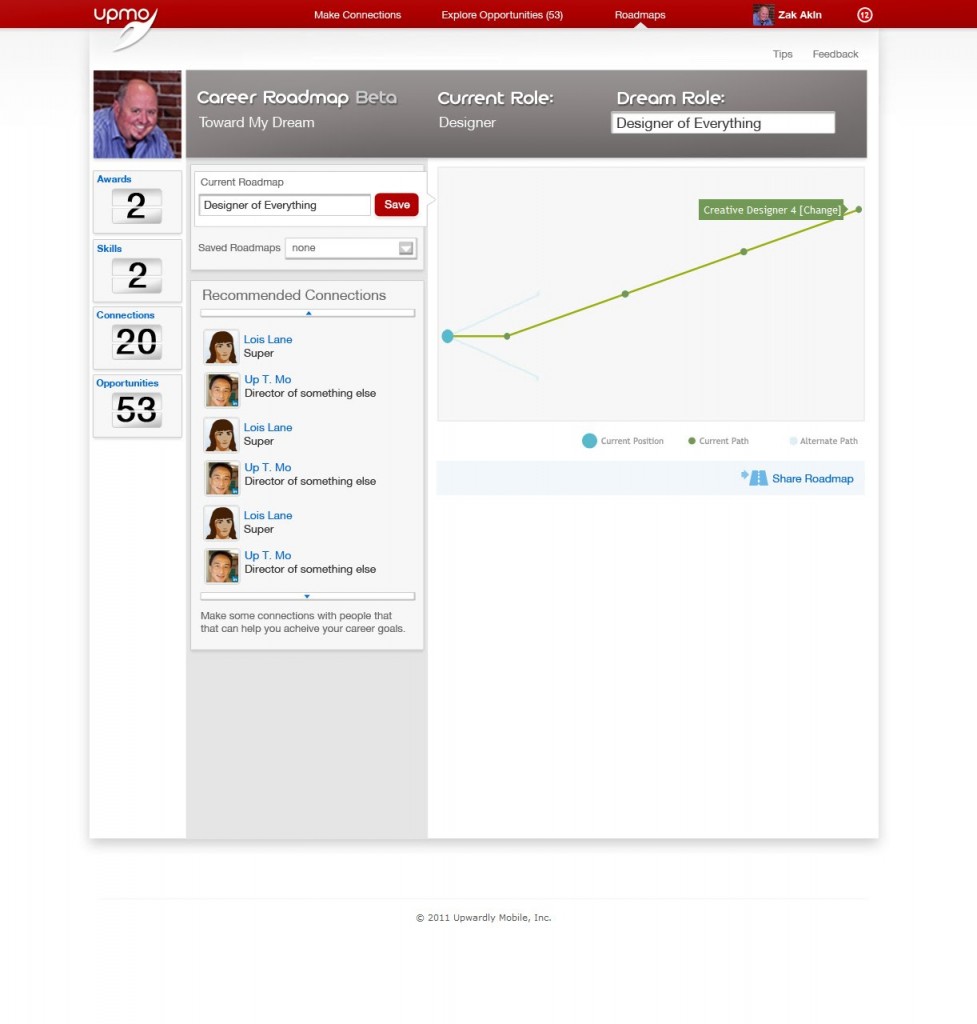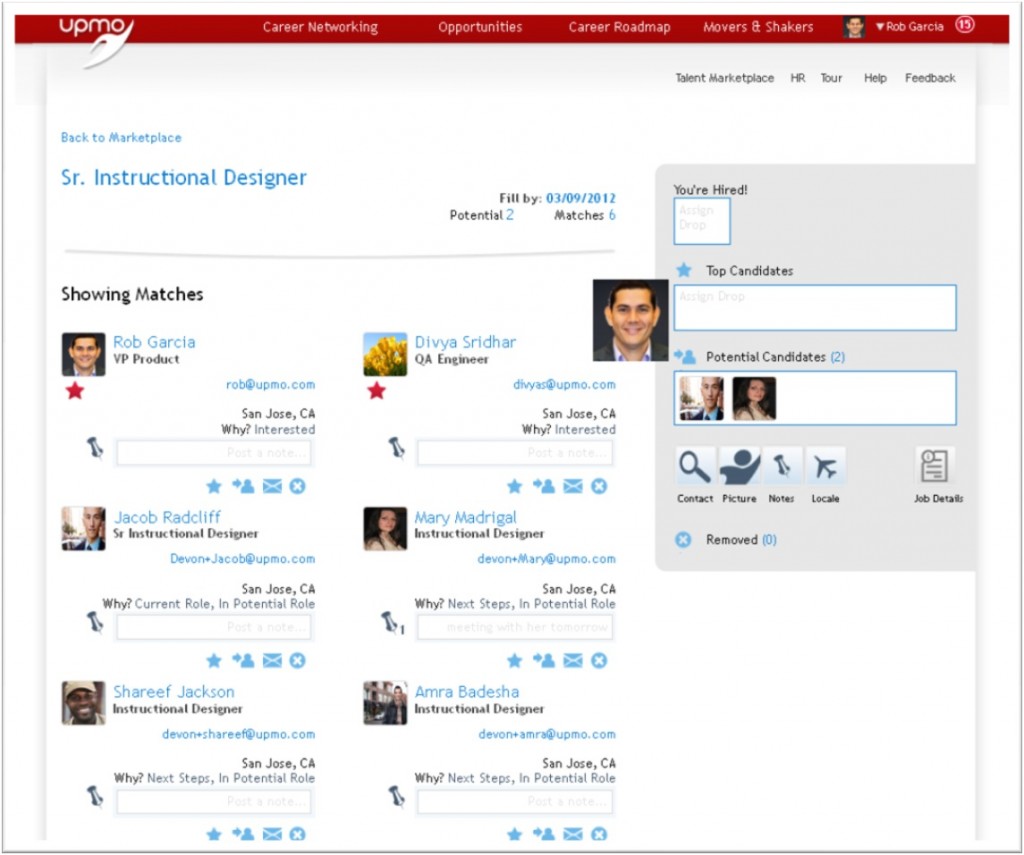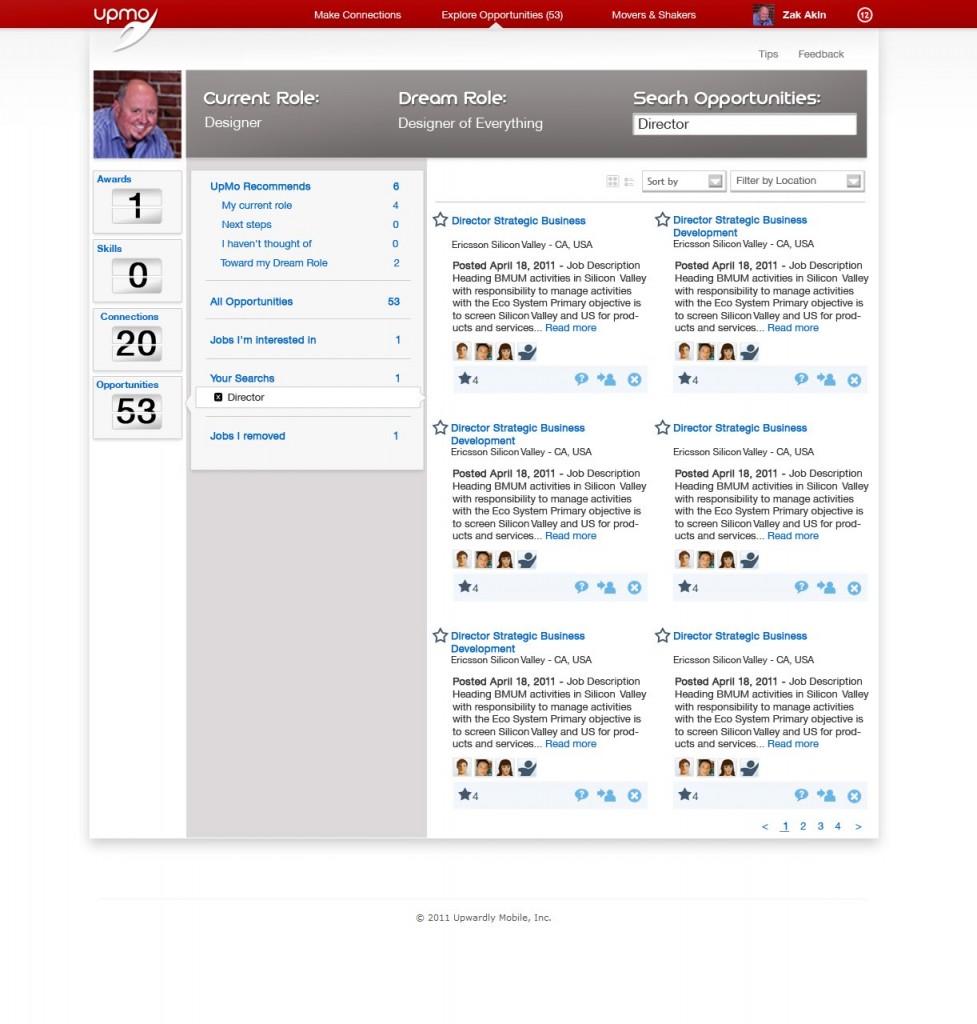The other day, Rob Garcia from Upmo contacted me on Twitter and asked if I was familiar with their talent management software. I’d seen a recent article in Fast Company, but didn’t have first hand knowledge of the tool, so Rob offered me a tour of Upmo.
When I’m speaking to audiences or clients about Social HR tools, I only include those that I have some first-hand knowledge of. This way, I can highlight what I see as the best parts of the tools and be able to provide a personal perspective, so I was interested to find out about Upmo. (Check out some other examples on my Innovative HR page.)
My simple overview of Upmo
Upmo is a cool tool that empowers employees to take more ownership of their career through applying for special projects and stretch assignments, mapping their career path, and networking with the right people within the company.
Why I think this is cool
If you’ve worked in any growing or mid-to-large size organization, you’ve probably heard this story: Someone in a management or senior position leaves or a role is opened because of growth. Bob, a “squeaky wheel” on that team gets promoted. Bob gets the politics of organizations and how to “be known”. Kate is highly motivated, has relevant knowledge from previous jobs or education, and would have loved to have an opportunity to at least speak to someone about the job, but she doesn’t know where to start and had no idea there was an opening until she heard that Bob got the job. Kate, a high-potential, smart employee, becomes disengaged because she gets “passed over”, and eventually leaves.
As an HR leader, I have spent time in the past coaching people like Kate on who to talk to, how to gain exposure. But for every Kate I coached, there are several that I missed. I can see this continuing to be a problem with Gen Y who don’t play the politics game well and may not have had the practice in networking properly.
I have worked in organizations where people spent months trying to determine high potential employees, finding out if we knew their ideal job, and determining who might be right to add to special projects or stretch assignments. This was full jobs in some organizations. And many Kates still got missed.
Upmo gives Kate a chance.
How it works
With Upmo, employees import their resume or linkedIn profile. They identify their dream job. They connect with other employees within their network or who are 2nd and 3rd connections. The system plots possible career paths for them, showing the lateral and vertical moves possible. 
Upmo identifies “opportunities” for them, which could be special projects, lateral job opportunities, or promotion opportunities. Upmo also identifies people within their 2nd and 3rd level connections that would be beneficial for them to network with.
All of this helps to empower employees who may not have known how to get out there in a traditional workplace.
On the HR and leadership side, Upmo identifies people who might be possible candidates for projects and jobs. With a simple drag and drop interface, you can identify the high potentials and successful candidates. It also interfaces with many HRIS systems. Upmo has thousands of skills for the company to identify as necessary and for employees to add to their profiles.
Upmo also offers social networking and collaboration, with a linked in-like front page where employees can talk about new skills they’ve learned or used, projects they’re working on, and problems they’re facing.
All in all, I can see some very cool opportunities to put career management into the hands of employees, be able to identify possible candidates that may have been “hidden” by the Bobs of the world in the past, and altogether help to create a more effective, engaged workforce.
Thanks Rob for introducing me to Upmo!
What do you think? Have you ever known a Kate? Would this be helpful in your organization? I’d love to hear your thoughts! Comment below!
Related posts:
Innovative HR – I introduce how many companies are creating magic with social tools.
Watch Upmo’s demo video

